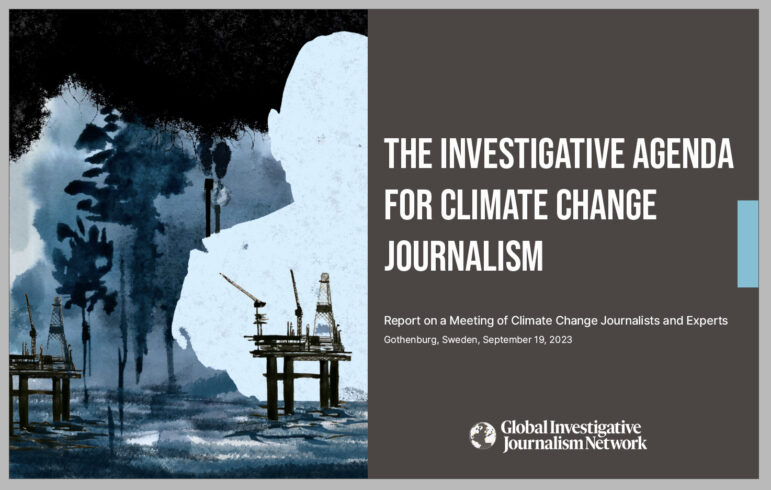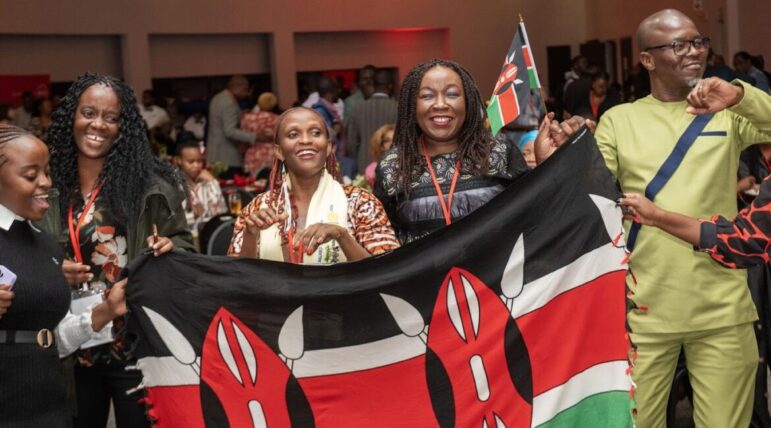Norwegian Mass Murderer’s Primary Target: Investigative Journalists at SKUP Conference
In chilling testimony before an Oslo criminal court last week, confessed mass-murderer Anders Behring Breivik told of how his original plan focused on attacking the spring 2011 conference of Norway’s Foundation for Investigative Journalism (known by its Norwegian acronym SKUP). Breivik said he considered the SKUP conference a “more legitimate target than Utoya,” the island site where on July 22 he massacred 67 people at the Norwegian Labor Party’s annual youth summer camp.
Breivik’s plan was first to car-bomb the SKUP conference and then attack survivors with firearms and a flamethrower, according to a manifesto he wrote. He told the court that he regretted not having enough time to make the bomb, and decided to shift his target to the Utoya camp. “I worked really hard to realize that but I was unfortunately unable to carry out the attack on the conference,” Breivik told the proceeding.
The SKUP conference, one of the world’s largest annual gatherings of investigative journalists, attracted a record 677 participants last year. Among them were many of Norway’s top journalists, as well as such international speakers as Nick Davies and David Leigh of The Guardian, Brigitte Alfter of the European Fund for Investigative Journalism, Paul Myers of the BBC, Robin Fields of ProPublica, and Paul Radu of OCCRP.
“We were shocked to learn this week that he in fact had us as Plan A,” said Jan Gunnar Furuly, president of SKUP. “It is frightening to see what kind of screwed up image he has created of Norway and the world, and how he portrays the role of media.”
An extreme rightist, Breivik blamed journalists, politicians, scholars and Muslims for committing “cultural Marxist/multiculturalist atrocities and the threat of Islamisation.”
Breivik laid out his plans for SKUP in the 1500-page manifesto he wrote before the attacks:
“There are annual gatherings for journalists in all Western European countries. These gatherings are considered THE MOST attractive targets for large scale shock attacks due to the amount and quality of category B traitors. To illustrate; in Norway, there is an annual gathering called the SKUP conference (the organization for critical and investigative press) where the most notable journalists/editors from all the nations media/news companies attend (500 delegates – 98% of them are considered “quality category B traitor targets”. The conference lasts for 2 days and is usually organized at a larger hotel/conference center. Security is light or non-existent making the conference a perfect target.
“Overview:
“· Targets: a concentration of 500 category B traitors
“· Primary/initial assualt method: 1-3 source detonation (vehicle based “barrack buster” covered with several layers of projectiles for maximum damage, f example small steel projectiles)
“· Goal: collapse of building causing maximum casualties coupled with secondary assault method
“· Secondary assault method: flame thrower, assault rifles, grenades, executing the survivors
of the initial blast(s).”
Unable to gather enough bomb material before the spring conference, Breivik set his sights elsewhere. Before attacking Utoya, he exploded a car bomb that day outside government buildings in downtown Oslo, killing eight people. His other targets, according to his manifesto: major media organizations, Labor Party headquarters, and the royal palace.









